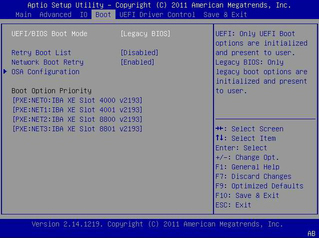How to change BIOS Settings From UEFI to Legacy Boot
WHY DO I HAVE TO CHANGE THE SETTINGS IN THE BIOS?
Firstly. What is the BIOS?
In a nutshell, the BIOS ( Basic input / Output System ) is a chip on the motherboard that tells the system what to boot and in what order. If it wasn't for the BIOS, the system would not know what order to load items, what hard drive to select to boot the operating system or how to give you the options to change how the system boots. Yes.
You would not have landed on this page by accident. You are probably here because you have purchased a hard drive and you are getting the ' please install an operating system ' error message or something along those lines.
Well you are at the right place.
All the hard drives we sell preinstalled with windows ( up until 14/12/2021 ) are sold with legacy boot installation. We do this because most of the hard drives that are purchased from us are for older machines that require the legacy boot option to be enabled. As a result, if your system has legacy boot mode enabled then once you install your new hard drive, the operating system will boot with no problem and you'll be on your way. But if it's not enabled, then you will receive the error messaged mentioned above.
Most newer machines will not automatically have legacy mode enabled and this is where the error comes into play.
We have a really bad video below that demonstrates how to enter the bios in order to enable legacy boot mode and get your laptop/PC up and running.
NOTE ON HP SYSTEMS:
Please note, once you have changed the boot mode in many of the HP laptops and computers you will then be asked to type in a 4 digit code that is displayed and press enter. You will have to do this in order to confirm the changes. It's a process not seen of other machines but you will have to do this in order to proceed.
Click on YouTube video below
If F2 does not allow you to enter the bios then your system is probably using a different hot key to allow you to enter.
Please click here to find a more comprehensive list of hot keys; you system should be on this list
To boot to UEFI or BIOS:
- Power off your machine
- Restart and continuously tap either the esp button or the F2
- when prompted to, click yes to enter the BIOS
The BIOS screen appears.
After a few moments, the BIOS Setup Utility appears.
The Boot menu screen appears.


